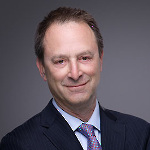Memory and Memorialization
Every year on September 11, the memories come flooding back. Some remember the horror of watching the events unfold on TV — or while standing in the street below. Some remember their own survival and the joy of reuniting with loved ones. And some remember the moment they knew their loved one was not coming home.
What people remember is the focus of a series of webcasts called “Exploring 9/11: The World Before and After,” presented on the 9/11 Memorial website. The program explores the many facets of memory from the viewpoints of science, history, religion, art and sociology. And it includes some eye-opening revelations about how people and societies remember historic and traumatic events, how we use memory to give meaning to the past and how our memories evolve over time.
Leading off the series is NYU Professor Ed Berenson, partner on a three-year study with the National September 11 Memorial & Museum researching memory and memorialization. Among the points he makes:
- Memory is malleable. Interviews with survivors of the attacks show their memories of that day changing over time from fuzzy and hard to articulate to clear and detailed.
- People may integrate information from later experiences into what they believe are their own memories of the day.
- Individual memories often conflict with historical documentation and evidence, but people tend to cling to their own memories.
- There exists a sort of social or collective memory than can be influenced and repressed by politics and other pressures to collectively forget.
- Our memories of an event change over time as they are seen in the context of ongoing events.
Of course, for survivors of the attacks and those who dealt closely with the aftermath, memories can have dire effects on mental health, even years later. Anyone suffering from post-traumatic stress syndrome or other after-effects should remember there is help available through the World Trade Center Health Program.

Leave a comment